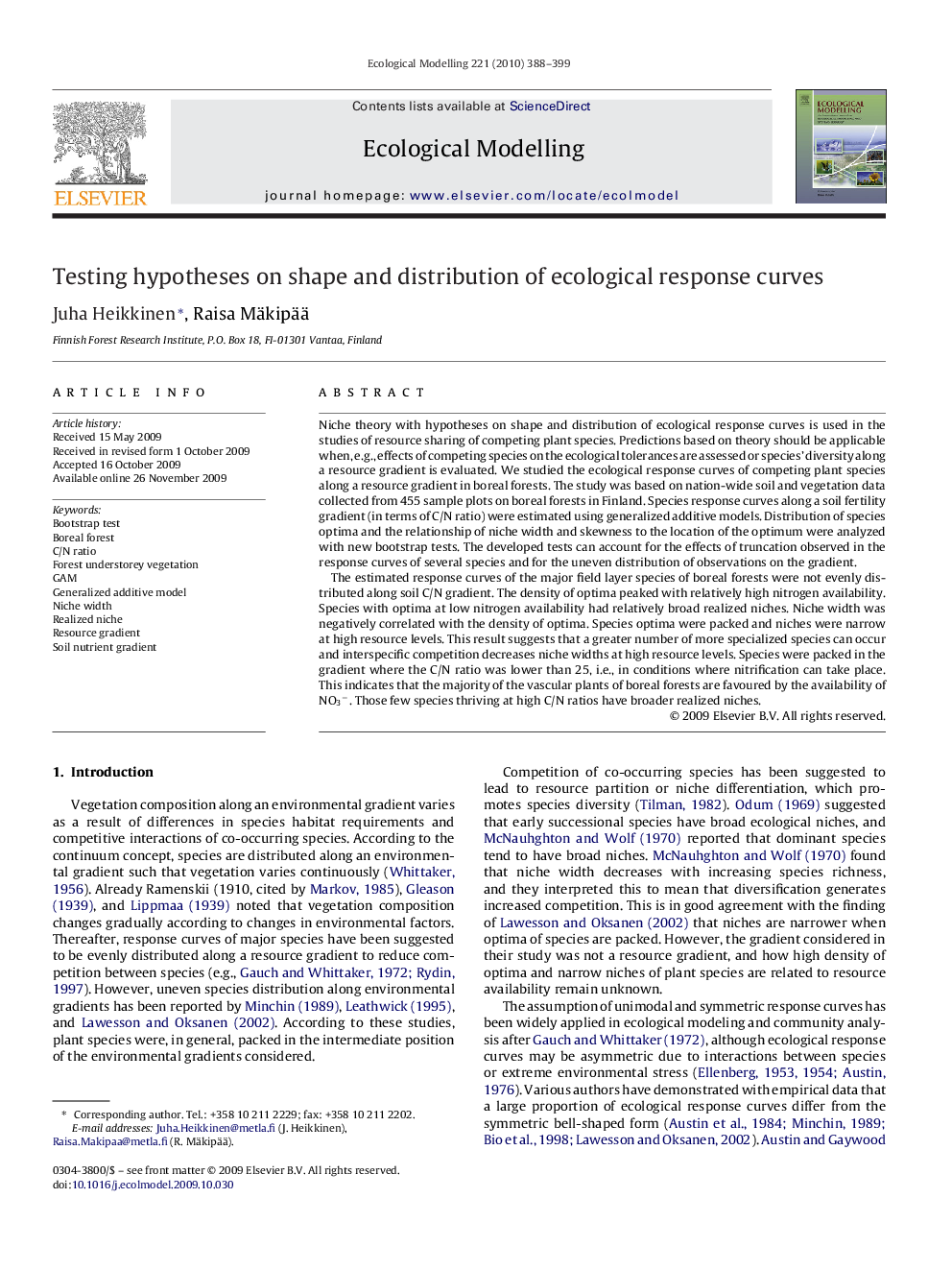| Article ID | Journal | Published Year | Pages | File Type |
|---|---|---|---|---|
| 4377454 | Ecological Modelling | 2010 | 12 Pages |
Niche theory with hypotheses on shape and distribution of ecological response curves is used in the studies of resource sharing of competing plant species. Predictions based on theory should be applicable when, e.g., effects of competing species on the ecological tolerances are assessed or species’ diversity along a resource gradient is evaluated. We studied the ecological response curves of competing plant species along a resource gradient in boreal forests. The study was based on nation-wide soil and vegetation data collected from 455 sample plots on boreal forests in Finland. Species response curves along a soil fertility gradient (in terms of C/N ratio) were estimated using generalized additive models. Distribution of species optima and the relationship of niche width and skewness to the location of the optimum were analyzed with new bootstrap tests. The developed tests can account for the effects of truncation observed in the response curves of several species and for the uneven distribution of observations on the gradient.The estimated response curves of the major field layer species of boreal forests were not evenly distributed along soil C/N gradient. The density of optima peaked with relatively high nitrogen availability. Species with optima at low nitrogen availability had relatively broad realized niches. Niche width was negatively correlated with the density of optima. Species optima were packed and niches were narrow at high resource levels. This result suggests that a greater number of more specialized species can occur and interspecific competition decreases niche widths at high resource levels. Species were packed in the gradient where the C/N ratio was lower than 25, i.e., in conditions where nitrification can take place. This indicates that the majority of the vascular plants of boreal forests are favoured by the availability of NO3−. Those few species thriving at high C/N ratios have broader realized niches.
